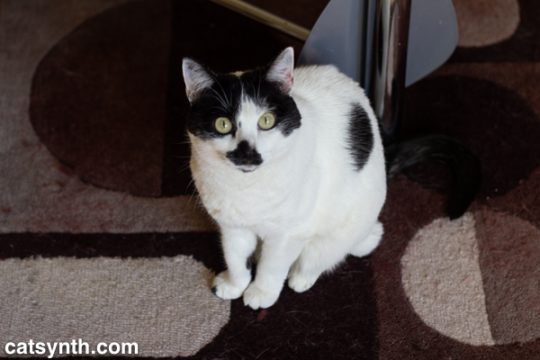The huge Cindy Sherman retrospective at SFMOMA will be closing in a week, and I would be remiss if I did not write a few words about it. Her work, which is almost entirely composed of self portraits, is often described with terms like “masquerade,” “caricature,” “persona”, and her still images lend themselves to the idea of performance and play. I had the opportunity to see the exhibition a few times and found the her use of invented persona and performance inspiring as my own work in both music and visuals moves in that direction.
While much of the attention has focused on Sherman’s more over-the-top and exaggerated portraits, I found her early Untitled Film Stills to be among the most compelling. In these pieces, she successfully transforms herself into realistic roles and characters that one might see in films of the 1960s and 1970s.
 ‘
‘
[Cindy Sherman, Untitled Film Still #21. 1978; gelatin silver print; 7 1/2 x 9 1/2″ (19.1 x 24.1 cm); The Museum of Modern Art, New York, Horace W. Goldsmith Fund through Robert B. Menschel; © 2012 Cindy Sherman Source: San Francisco Museum of Modern Art]
The transformation from her real appearance and character into these fictional roles through costuming, makeup and expression is already apparent, and one would not think they are all the same person if seen outside the context of the exhibition. It is the realism coupled with black-and-white that makes these portraits stand out from the rest of her body of work. There was also one particularly interesting series of images documenting the Sherman’s transformation from her everyday self into one of the characters.
One the other extreme are some of her more recent portraits, depicting female archetypes from contemporary society as well as a series devoted to aging “society women”. She uses the same elements of clothing, hair, make-up, setting and pose as in the earlier images, but here the effect is to make these everyday tools of beauty and personal identity into something strange. Some results of beautifully exaggerated, others veer towards the grotesque. But in all of these pieces there is a deliberate falseness to the facades and personae.

[Cindy Sherman, Untitled #463, 2007-08; chromogenic color print; 68 5/8 x 6″ (174.2 x 182.9 cm); courtesy the artist and Metro Pictures, New York; © 2012 Cindy Sherman. Source: San Francisco Museum of Modern Art.]
Once again, these images suggest performance, ranging from burlesque to reality television to more experimental performance art where the visitor is confronted with this exaggerated form of human appearances and has to figure out how to interact with her.
Another take on fictitious persona can be found in her history series from 1988-1990. Here, she uses the same elements to recreate scenes either directly referencing or suggesting historical works of Western painting. She transforms herself into the a variety of women as well as a few men that one might see in paintings from the 17th and 18th centuries.

[Cindy Sherman, Untitled #193, 1989; chromogenic color print; 48 7/8 x 41 15/16″ (124.1 x 106.5 cm); courtesy the artist and Metro Pictures, New York; © 2012 Cindy Sherman. Source: San Francisco Museum of Modern Art]
In some cases, they are quite convincing, while in others they are once again deliberately exaggerated through the addition of prothetic facial elements, lactating breasts, as so on. There was even one portrait that at least to me looked more like a Klingon from Star Trek than a European aristocrat.
Not everything in this exhibition was playful. A few of the characters were clearly meant to be battered or abused women. And entire room was devoted the period in the 1980s when she moved away from self portraits into more abstract pieces. This was the height of the AIDS epidemic and these images portraying dismembered bodies and rotting flesh were very difficult to look at.
Finally, in a nod to the focus on digital technology of San Francisco and SFMOMA, Sherman presented a wall-to-ceiling site-specific mural that used Photoshop rather than traditional techniques to alter her appearance. In the piece, we see her larger than life in a variety of characters, the most memorable had her in long hair and long flowing dress, more reserved than in her later photographic portraits. The use of Photoshop also is a reminder of how the ideas of invented personae is more accessible to more people than ever before.
As I said in opening, this exhibition was an inspiration as I move into more invented personae and theatrical performance in my own work, whether in music, video or photography. It is more of indirect influence through the mechanics and discipline of her production and the idea of the characters and transformation, rather than a desire to specifically emulate what she does. In that sense, the timing could not have been better.
Cindy Sherman will remain at SFMOMA in San Francisco through October 18. If you are in the Bay Area and have not yet seen it, I recommend doing so. The exhibition will next travel to the Walker Art Center in Minneapolis and then onto Dallas.




 ‘
‘







